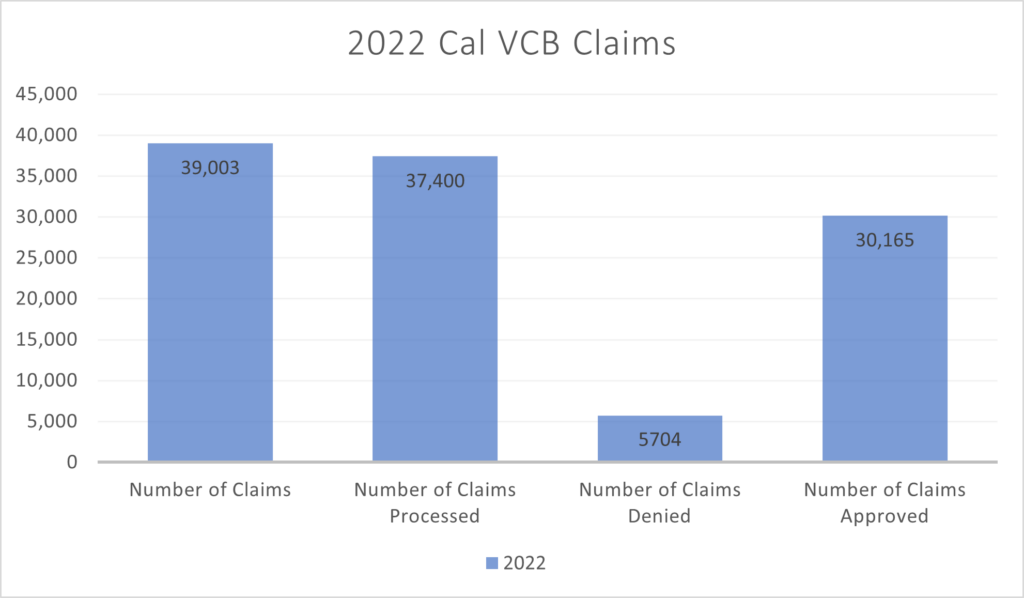The California crime victimization numbers are staggering. In 2022, the last full year of statistics, violent crime rose 6.1 percent and property crimes rose 6.2 percent. In all – 193,019 people were reported victims of violent crime and there were 902,977 reported property crimes for a total of 1,095,496 crimes. Of those 2,206 were homicides, 14,346 were rapes, 47,669 robberies, and 47,699 aggravated assaults.
Michael Romano, a leading reformer and co-author of Prop 47 said in 2018, “to look at it from a year-to-year basis is very short-sighted, we really have had a sustained downward trend over the past decade or two.”
Recently, the Federal Bureau of Investigation released the 2022 Uniform Crime Reports which show that, despite progressive assertions that California’s crime rates were declining or no worse than other states, they are actually increasing and worse than other states.
By every measure, more Californians are crime victims today than they were 10 years ago.
And what about those victims?
In 2008, the voters passed Proposition 8 to enact the Victims Bill of Rights. Both the state Attorney General office’s website and the California Victim Compensation Board prominently feature their respective commitment to serving crime victims.
The Attorney General office’s website boldly proclaims, “Victims have rights and Attorney General Bonta is committed to ensuring those rights are protected.”
But it’s not a proactive system. Take a closer look and you’ll see that the Attorney General’s office highlights the words “upon request” every time it appears in the statute. In fact, the Attorney General’s office makes no effort to proactively notify crime victims of court or parole dates nor how to do so themselves. If you’re a crime victim, you are on your own.
The numbers show us this is even more evident at the California Victims Crime Board (Cal VCB).
According to the 2022/23 Cal VCB Annual Report, 39,003 applications were received for services and compensation from California’s over 1 million crime victims, with the board approving 30,165. The victims and their survivors shared $46.7 million dollars in services. Victim claims can roll over from year to year and in the case of homicide victims the claim window is seven years.

Cal VCB employs 232 administrators and staff, with an annual employee budget of $19.2 million out of $201.7 million in total funds. It takes 232 VCB employees to process the claims of 39,000 victims, an annual rate of 168 claims per employee or .6 claims per employee per workday. Cal VCB makes the DMV look efficient but then the director of the VCB is a DMV veteran.
The approximately $46.7 million in paid claims amounts to $1,548 per victim. Of course, most crime victims don’t file claims.
Altogether,$139.5 million in victim funds are unclaimed each year, despite there being a lifetime cap of $70,000 to individual crime victims. To raise awareness, the VCB had budgeted $3 million for additional outreach.
The largest amount paid out is funeral costs which total $17.2 million or $7,796.00 per murder victim. Funeral, relocation and crime scene clean-up costs have been increased in 2022 per the following:
- Funeral and burial expenses increased from $7,500 to $12,818.
- Relocation expenses increased from $2,000 to $3,418.
- Crime scene cleanup expenses increased from $1,000 to $1,709.
If every violent crime resulted in an eventual $70,000 claim, the cost to California would be $13.5 billion annually. Perhaps that’s why just $3 million is being spent on outreach.
If you do clean up the crime scene in your home, bury a loved one, and move to safety or for your psychological well-being, you will do so at your own expense and wait for a reimbursement check to arrive two months later. The official wait time is 55 days from when you file a claim. It should be no surprise that news reports of a homicide case often close with a plea from the family for funds and a link to a Go Fund Me request.
The financial costs are the easily quantifiable part of victimization. For the victims, a potential lifetime of trauma awaits. If the victim was the family breadwinner, the consequences can be dire. Sexual assault victims carry the psychological scars indefinitely. The physical trauma of an aggravated assault, which can include loss of sight, hearing, a limb, or mental acuity, are obvious. Domestic violence is deeply damaging to the victim and children. Even a burglary can rob the victim of their sense of safety and well-being once it is discovered that their home is no longer safe from intruders.
Today, we are living in what author Heather MacDonald calls the “great inversion.” The only “victims” that progressive leaders want to discuss are the so-called victims of the criminal justice system who are, in fact, responsible for all of this.
Earlier this year, Asm. Mia Bonta illustrated this perfectly when, during a debate on a bill to reimplement aggravated sentence enhancements for criminals who use weapons, she said:
Such are the times in which we live – and some die.
Steve Smith is author of the recent PRI student on crime in California, “Paradise Lost,” and is a senior fellow in urban studies at the Pacific Research Institute.


